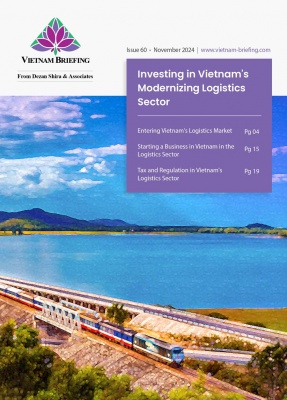Vietnam’s Regional Minimum Wage Effective from July 1, 2025
As of July 1, 2025, Vietnam’s regional minimum wage will be officially applied in 34 provinces and centrally run cities following the province merger. Employers in Vietnam are advised to pay attention to the cost impact of the statutory pay rate and the minimum regional wage.
Under Resolution No. 202/2025/QH15, Vietnam’s National Assembly has approved the restructuring of local administrative units, reducing the total centrally-governed cities and provinces from 63 to 34, effective on June 12, 2025.
While the regional minimum wage remains unchange, a two-level local government model will be officially implemented as of July 1, 2025. Since the district level has been abolished, the new regional minimum wage will closely follow the levels of the commune and ward.
Last year, the Government issued Decree No. 73/2024/ND-CP regarding the new basic salary and Decree No. 74/2024/ND-CP concerning the new minimum salaries, both of which took effect from July 1, 2024. As a result, the capped salaries used to calculate contributions for social insurance, health insurance, and unemployment insurance will increase accordingly.
Updates to the Vietnam minimum wage from July 1, 2024
|
Vietnam’s Regional Minimum Wage |
||||
|
|
Per month |
Per hour |
||
|
No. |
VND |
US$ |
VND |
US$ |
|
Region 1 |
4,960,000 |
196 |
23,800 |
0.94 |
|
Region 2 |
4,410,000 |
175 |
21,200 |
0.84 |
|
Region 3 |
3,860,000 |
153 |
18,600 |
0.74 |
|
Region 4 |
3,450,000 |
137 |
16,600 |
0.66 |
Nguyen Vu Phuoc Hong, Manager of HR and Payroll at Dezan Shira & Associates Vietnam, notes that the change [in minimum wage] will impact multiple aspects that are calculated based on the statutory pay rate, including social insurance (SI), health insurance (HI), union fees, unemployment insurance (UI) (hereinafter “SHUI” to refer all four categories) and benefits from social insurance.
SHUI and trade union fee contributions
|
Items |
From July 1, 2023 to June 30, 2024 |
From July 1, 2024 |
Note |
|
The statutory pay rate |
VND 1,800,000 |
VND 2,340,000 |
All Vietnam |
|
The maximum social insurance salary |
VND 36,000,000 |
VND 46,800,000 |
The maximum SI salary is 20 times the statutory pay rate. |
|
The maximum health insurance salary |
VND 36,000,000 |
VND 46,800,000 |
The maximum HI salary is 20 times the statutory pay rate. |
|
The maximum trade union fees salary |
VND 36,000,000 |
VND 46,800,000 |
The maximum trade union fee salary is 20 times the statutory pay rate. |
|
The minimum regional wage |
|||
|
The maximum unemployment insurance salary – Region 1 |
VND 93,600,000 |
VND 99,200,000 |
The maximum UI salary is 20 times the regional wage |
|
The maximum unemployment insurance salary – Region 2 |
VND 83,200,000
|
VND 88,200,000
|
|
|
The maximum unemployment insurance salary – Region 3 |
VND 72,800,000
|
VND 77,200,000
|
|
|
The maximum unemployment insurance salary – Region 4 |
VND 65,000,000
|
VND 69,000,000
|
|
How to understand the regional minimum wage in Vietnam
The regional minimum wage in Vietnam represents the lowest wage level and serves as the basis for businesses to negotiate and pay wages to laborers. This amount applies to individuals working under employment contracts as stipulated by the Labor Code, including those working in enterprises, cooperatives, farms, households, individuals, and other Vietnamese organizations that employ staff under contracts, as well as foreign organizations and individuals in Vietnam that employ laborers.
Vietnam’s monthly minimum wages vary across four different regions, each based on the living standards in those areas. The new organization of local administrative units has significantly changed how regions are categorized, such as:
- Region 1: This region encompasses the most economically developed and urbanized areas of Vietnam, including its key industrial and business hubs, such as Hanoi, Ho Chi Minh City, Hai Phong, and Da Nang.
- Region 2: This region encompasses areas with substantial industrial and economic development, albeit at a lower intensity than Region I. Most areas of Binh Duong, Dong Nai, and Can Tho belong to this region.
- Region 3: Comprising areas with moderate economic development, this region features emerging industrial and agricultural areas, some of which belong to Hai Duong, Khanh Hoa, and Long An.
- Region 4: This region encompasses the least economically developed areas, often characterized as rural or less industrialized, with a primary focus on agriculture and small-scale industries.
Background
The latest regional minimum wage adjustment took place on July 1, 2024, with a 6 percent increase aimed at ensuring a basic living standard in 2025. For over 10 years, Vietnam’s regional minimum wage was adjusted every January 1. However, due to the impact of the COVID-19 pandemic and global fluctuations, the two most recent minimum wage adjustments were both made on July 1.
With inputs from Vu Nguyen Hanh.
(This article was originally published June 28, 2024. It was last updated June 26, 2025.)
About Us
Vietnam Briefing is published by Asia Briefing, a subsidiary of Dezan Shira & Associates. We produce material for foreign investors throughout Asia, including ASEAN, China, and India. For editorial matters, contact us here and for a complimentary subscription to our products, please click here. For assistance with investments into Vietnam, please contact us at vietnam@dezshira.com or visit us at www.dezshira.com.
Dezan Shira & Associates assists foreign investors throughout Asia from offices across the world, including in Hanoi, Ho Chi Minh City, and Da Nang. We also maintain offices or have alliance partners assisting foreign investors in China, Hong Kong SAR, Dubai (UAE), Indonesia, Singapore, Philippines, Malaysia, Thailand, Bangladesh, Italy, Germany, the United States, and Australia.
- Previous Article Amended Vietnamese Nationality Law: Key Updates for Foreign Workers
- Next Article Vietnam’s On-Spot Export and Import Regime: Latest 2025 Updates































